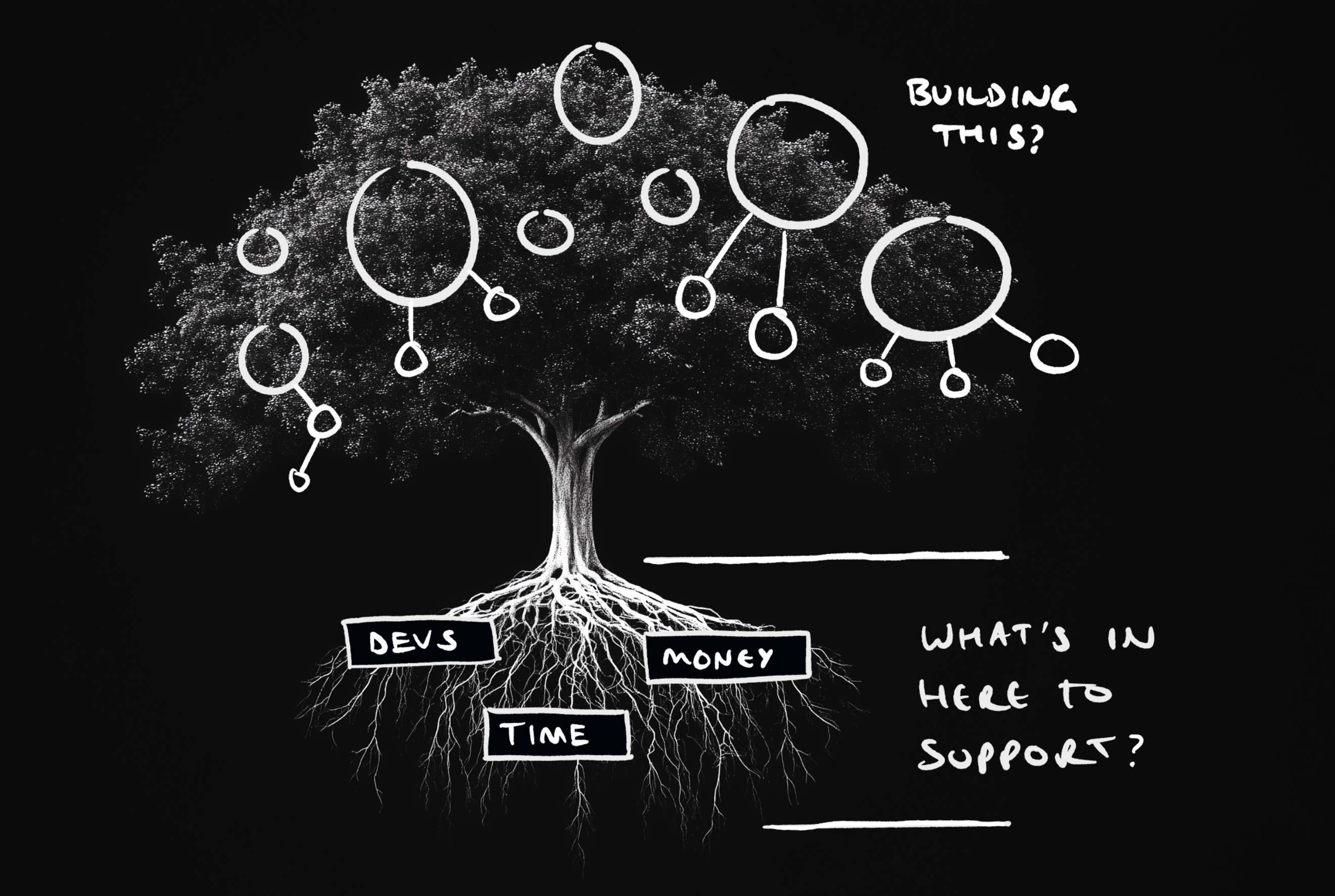Product Opportunity Tree (It's time to put down some roots)
Written by: Darrell Gardiner | Sat Apr 06 2024Product opportunity trees are great, but if your tree is too top heavy it's gonna blow over in the wind. Let's look at the root structure and support. What opportunities can the infrastructure and team resources actuall support

We’ve talked a lot about customer acquisition and product roadmaps, but there’s another tool I think is essential for any product team: the Product Opportunity Tree. It’s a fantastic way to visualize and prioritize opportunities, but here’s the thing—if your tree is too top-heavy, it’s going to blow over in the wind. Let’s dive into why focusing on the root structure and support is crucial for your success.
The Basics of a Product Opportunity Tree
A Product Opportunity Tree helps you map out different opportunities and ideas, branching out from your main goal or vision. It’s a structured way to ensure you’re not missing any potential avenues for growth and innovation. However, just like a real tree, it needs a strong root system to support it.
The Root Structure: Foundation and Support
The roots of your tree represent the infrastructure and team resources that support your opportunities. Without strong roots, your tree is vulnerable. Here’s how you can ensure your opportunity tree is well-rooted and stable:
Assessing Infrastructure and Team Resources
- Realistic Capacity: Understand what your team can realistically achieve. Overloading them with too many opportunities can lead to burnout and lower quality outputs.
- Skill Sets: Evaluate the skills your team possesses and identify any gaps. Make sure you’re not pursuing opportunities that require expertise you don’t have.
- Tools and Technology: Ensure you have the right tools and technology to support the opportunities you’re chasing. This includes everything from software to hardware and even processes.
Focus on What You Can Support
Yes, you won’t be able to compete with every VC-backed startup or established incumbent in the market—and that’s okay. Here’s why:
- Niche Over Breadth: Your customers only need one or two key features to solve their problems. Focus on excelling in these areas rather than spreading yourself too thin trying to compete on all fronts.
- Quality Over Quantity: Delivering a few features exceptionally well can set you apart more effectively than offering many mediocre ones.
- Sustainable Growth: Building a solid foundation allows for sustainable growth. If you try to grow too quickly without the proper support, you’re setting yourself up for failure.
Cutting Room Floor: What to Leave Out
In product development, there’s always a lot that ends up on the cutting room floor. Here’s how to decide what makes the cut and what doesn’t:
- Customer Feedback: Listen to what your customers are saying. Listen to their problems, not their solutions.
- Market Trends: Keep an eye on market trends, but don’t be swayed by every new fad. Stick to opportunities that align with your vision and capabilities.
- Strategic Alignment: Ensure every opportunity aligns with your strategic goals. If it doesn’t, it might be best left behind.
Building a Balanced Opportunity Tree
A balanced opportunity tree is key to ensuring stability and growth. Here’s how to build one:
- Identify Core Opportunities: Start with a few core opportunities that align with your vision and resources.
- Prioritize: Look for items that you’d categorise as quick wins, or massive opportunities.
- Validate and Iterate: Continuously validate your opportunities through customer feedback and research. Be ready to iterate and adjust your tree as necessary.
Final Thoughts
Creating a Product Opportunity Tree is an excellent way to visualize and prioritize your product development. But remember, without a strong root system, your tree is at risk of toppling over. Focus on building a solid foundation by assessing your infrastructure and team resources, and don’t be afraid to leave things on the cutting room floor.
By rooting your tree in realistic capacity, skill sets, and the right tools, you can ensure it grows strong and steady. This way, you’ll deliver the features your customers truly need and set your product up for sustainable success.
Hope this helps you build a more balanced and effective Product Opportunity Tree!
Cheers,
Darrell
Subscribe to my newsletter to get the latest updates and tips on how my latest project or products.
